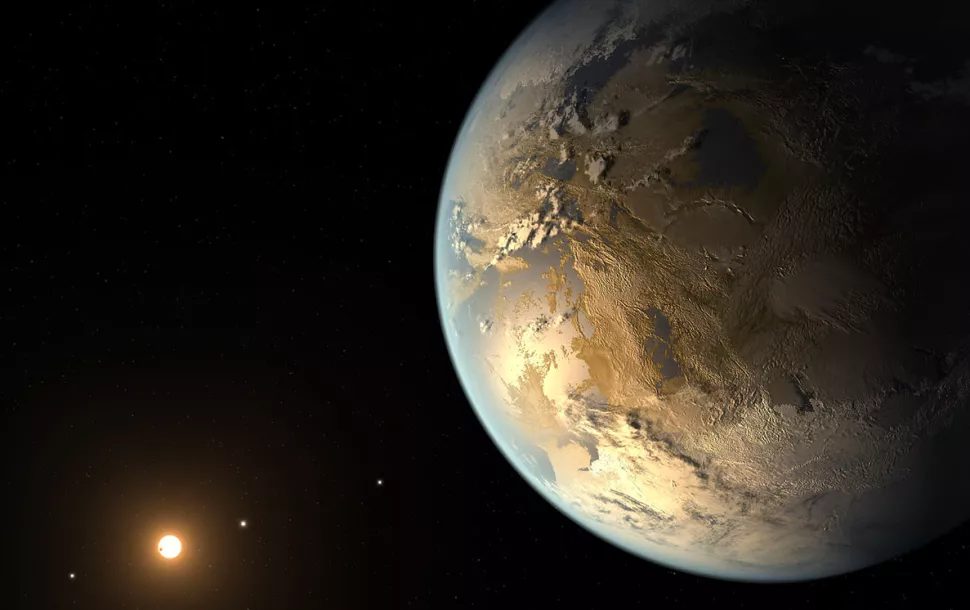At least a dozen planets outside our solar system may be more suitable for life than Earth.
These worlds are somewhat older, slightly wetter, slightly warmer, and slightly larger than Earth, according to research published Sept. 18 in the journal Astrobiology. All of these criteria may indicate that some of these planets are ideal for searching for extraterrestrial life.
“We have to focus on certain planets that have the most promising conditions for complex life. However, we have to be careful to not get stuck looking for a second Earth because there could be planets that might be more suitable for life than ours,” University of Washington astrobiologist Dirk Schulze-Makuch said in a statement.

Astronomers have discovered more than 4,000 exoplanets, or planets outside our solar system, so far. Most of these are not particularly conducive to life.
For example, planet KELT-9b is so hot that its atmosphere is constantly melting. The darkest known planet, TrES-2b, has an atmospheric temperature of 1,800 degrees Fahrenheit (980 degrees Celsius).
On the other end of the inhospitable spectrum is GJ 433 d, whose discoverers described it as the coldest Neptune-like planet ever discovered.
But there are also many planets within their star’s habitable zone, or the “just-right” distance conducive to surface temperatures that aren’t too hot or too cold for life as we know it to evolve.
Schulze-Makuch and his colleagues aimed to identify exoplanets most likely to be “superhabitable,” or not only in the habitable zone but also boasting other features that might make them a good place for life to blossom.
A better version of Earth might also have a slightly larger moon, or a moon slightly closer to the planet, which would help stabilize its orbit and prevent life-disrupting wobbles, the researchers wrote.

The researchers came up with a set of parameters to use to meet all these criteria. According to these parameters, the perfect superhabitable planet would be in orbit around a K dwarf star, which is a relatively small star star that’s slightly cooler than our sun (which is considered a yellow dwarf); about 5 billion to 8 billion years old; about 10% larger than Earth; about 9 F (5 C) warmer than Earth, on average; moist with an atmosphere that is 25% to 30% oxygen, with scattered land and water.
The perfect planet would also have plate tectonics or a similar geological process in order to recycle minerals and nutrients through the crust and to create diverse habitats and topography, and would have a moon between 1% and 10% of its size orbiting it at a moderate distance.
It’s not possible to evaluate distant exoplanets on all these criteria. There is no way to calculate an exoplanet’s landmass area, for example, much less how it’s distributed.
But based on factors that can be measured, such as star type and planet radius, the researchers honed in on objects that seem to meet that criteria and have been spotted by the Kepler telescope; they found 24 Kepler Objects of Interest, which are objects that may or may not be planets.

Two of the 24 have been confirmed as exoplanets (Kepler 1126 b and Kepler-69c). Some of the others may be false positives that don’t turn out to be planets. Of the 24 objects, nine were orbiting around the proper type of star, 16 fell into the correct age range, and five were in the right temperature range.
Only one candidate, KOI 5715.01, fell into the correct range for all three categories, but the true surface temperature of the planet is determined by the severity of the greenhouse effect in its atmosphere, according to the researchers.
The 24 probable planets are all more than 100 light-years away, and several are likely too far away to analyse even with the most powerful telescopes right now. Kepler-69c, for example, is more than 2,000 light-years away, so astronomers are unlikely to be able to investigate it further for indications of life very soon.
However, defining what makes a planet “superhabitable” is critical, according to Schulze-Makuch and his colleagues, because one of these worlds may be identified within 100 light-years. If that is the case, they said, that planet should be the first location Earthlings look to see if there is other life in the universe.
Originally published on Live Science.
Source: amazingastronomy.thespaceacademy.org








